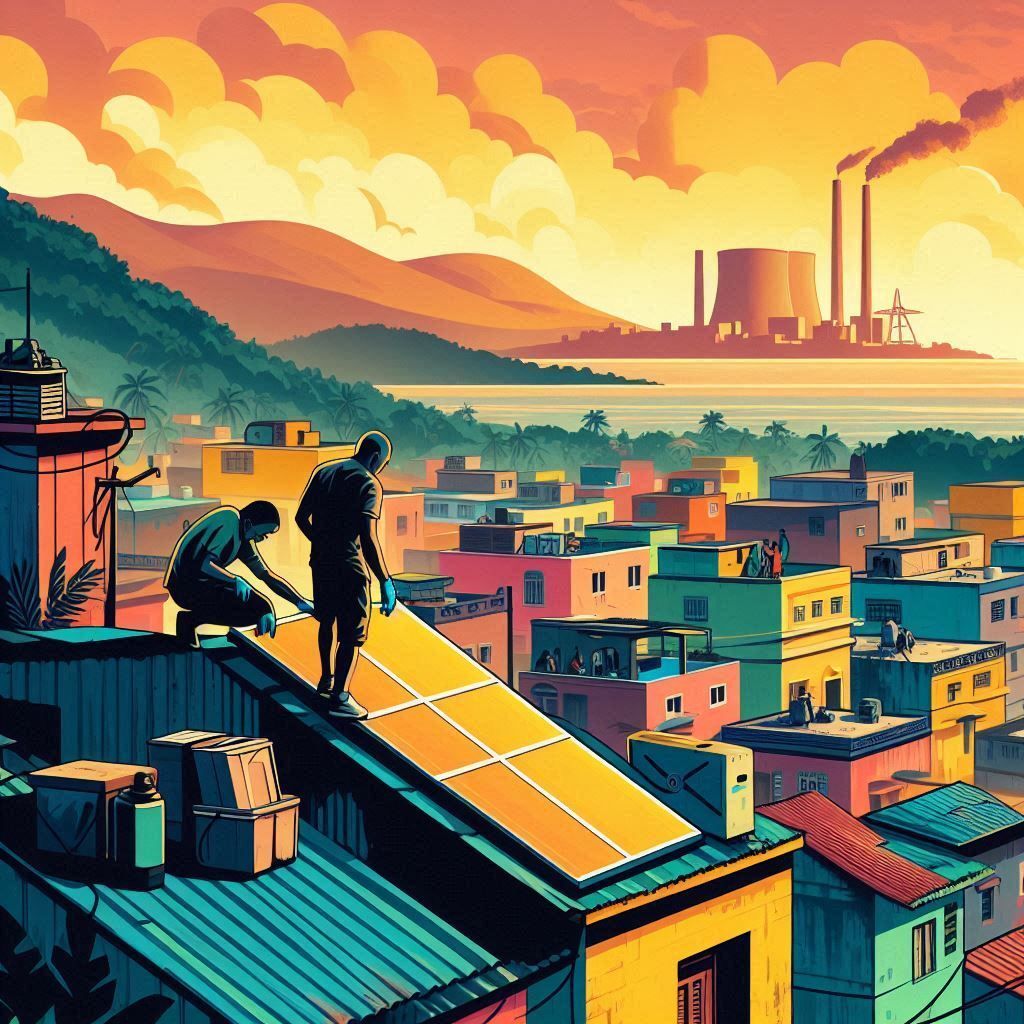- Connect Puerto Rico
- Posts
- FEMA’s Puerto Rico Grid Plan Faces New Pressure After Funding Reversals
FEMA’s Puerto Rico Grid Plan Faces New Pressure After Funding Reversals
Plus: Uruguay–UPR energy debate, NFE’s financial crisis deepens, and new warnings on costly overbuild

AI-generated illustration depicting community solar installation amid renewed federal pressure on Puerto Rico’s grid plan.
(Art by DALL·E 3, art direction by Jillian Melero, Nov. 25, 2025.)
Welcome to Connect Puerto Rico, where community expertise leads the conversation on energy and resilience.
Communities across Puerto Rico, the Caribbean, and the border region face many of the same challenges: unstable energy systems, flooding, climate pressure, and infrastructure that breaks when people need it most.
Last week, I joined a panel hosted by the Center for Community Resilience Research Innovation and Advocacy (CCRRIA) at UT Rio Grande Valley, where researchers and journalists asked a simple but urgent question: How do we learn from each other as storytellers and communicators to strengthen community resilience?
The moment felt especially meaningful because CCRRIA’s organizers — Dr. Cecilio Ortiz Garcia and Dr. Maria Perez Lugo — were my hosts during a 2019 reporting trip on Puerto Rico’s post-María recovery. Their work shaped my early understanding of energy and community power, and directly influenced the thinking that would become Connect Puerto Rico.
Two more voices who shaped my early understanding of energy in Puerto Rico show up again in this month’s issue.
The first is Kari Lydersen, whose new reporting for Canary Media breaks down what FEMA’s latest grid decisions could mean for distributed solar. Kari introduced me to Marla and Cecilio. (And she often helps me by reviewing the newsletter and offering edits.)
The second is Prof. Marcel Castro Sitiriche — one of the first experts I interviewed about Puerto Rico’s potential for rooftop solar and microgrids — featured in a new video by independent journalist Bianca Graulau.
Together, their work reinforces something we see across Puerto Rico: the most durable solutions come from people rooted in the communities most affected
In This Issue
FEMA’s Grid Plan Challenged as Distributed Power Gains Ground
📰What Happened
FEMA’s grid-rebuild plan in Puerto Rico is under renewed pressure after a federal court ruling forced the agency to reconsider alternatives that prioritize distributed solar over the island’s centralized, fossil-fuel system. A new report from Canary Media digs into what’s at stake and why the outcome matters for communities already living with frequent outages and high energy burdens.
Last month, we covered the court ruling (via IEEFA/E&E News) that forced FEMA to redo its environmental review and evaluate rooftop solar, batteries, microgrids, and demand-side alternatives. That ruling stands, but Canary Media shows how much more is on the line than a procedural review.
The Trump administration has already reversed key Biden-era commitments to distributed generation — canceling $156 million for low-income solar in Puerto Rico and redirecting $365 million in rooftop-solar funds toward hardening the centralized, fossil-fuel grid.
💡Why it Matters
Communities near Puerto Rico’s fossil plants continue to face the highest risks. Most coal and oil generation sits on the south coast, close to low-income neighborhoods that already experience the worst pollution and outages.
Distributed solar is growing, but unevenly. Puerto Rico now has 1.2 GW of rooftop solar, supplying more than 10% of demand, yet 350,000 low- and moderate-income households still can’t access systems without financial help.
Studies from NREL and Cambio PR/IEEFA also point to distributed generation as both viable and cost-effective. A 2020 NREL analysis found rooftop and distributed solar could meet the island’s full energy needs, while a 2021 Cambio PR/IEEFA study found a 75% distributed system would be cheaper to operate by 2035.
Utility-scale solar offers benefits but depends on the same long transmission lines that fail during hurricanes — and it often competes with prime agricultural land.
🔎What to Watch
FEMA’s response: Whether the agency appeals the ruling or meaningfully incorporates distributed options as it revises its grid plan.
Funding gaps: With low-income solar support canceled, 350,000 households still lack access to rooftop systems or batteries.
Resilience vs. land use: Utility-scale solar depends on vulnerable transmission lines and often replaces farmland — watch whether agencies shift more support toward rooftop systems.

Reply